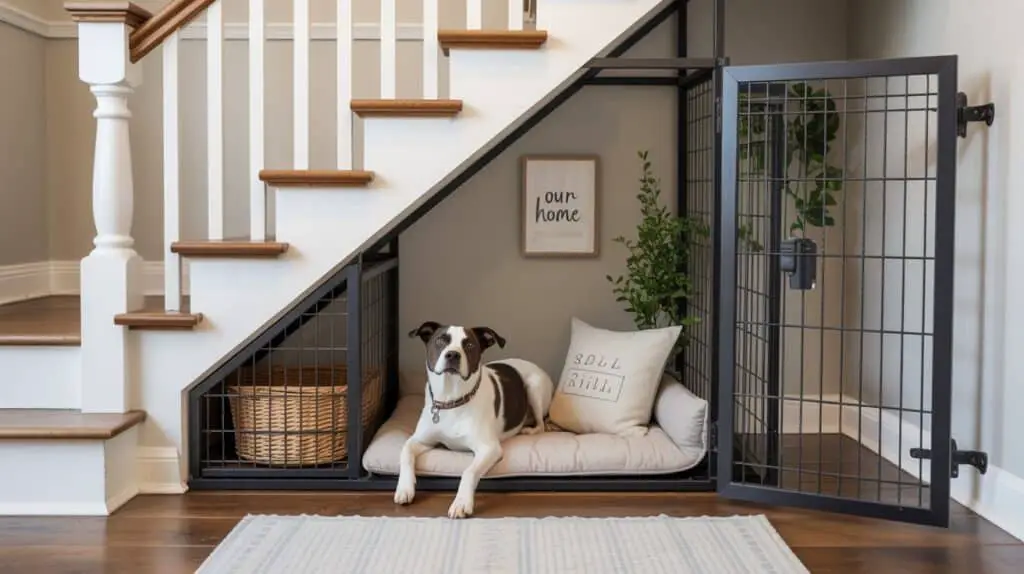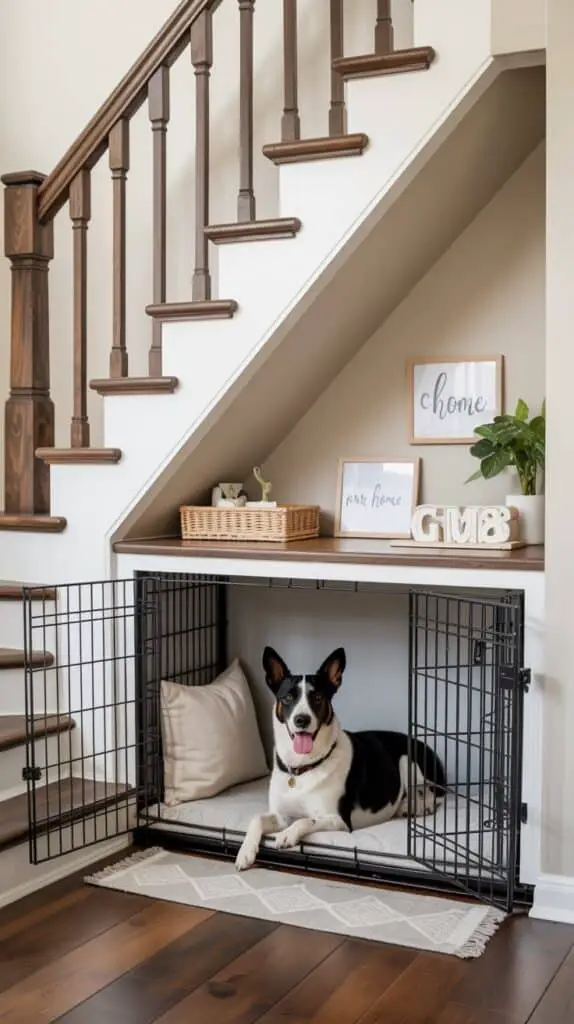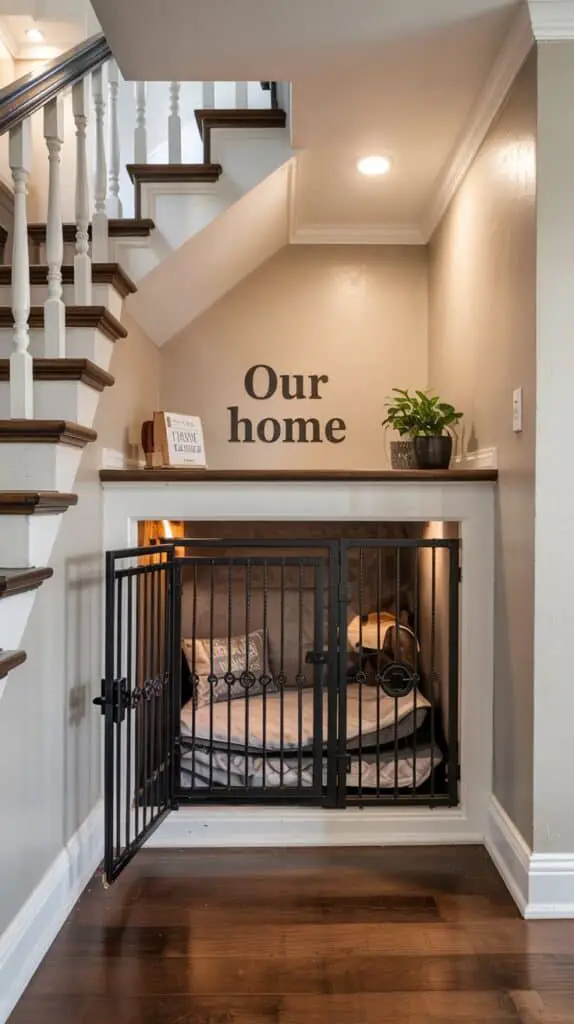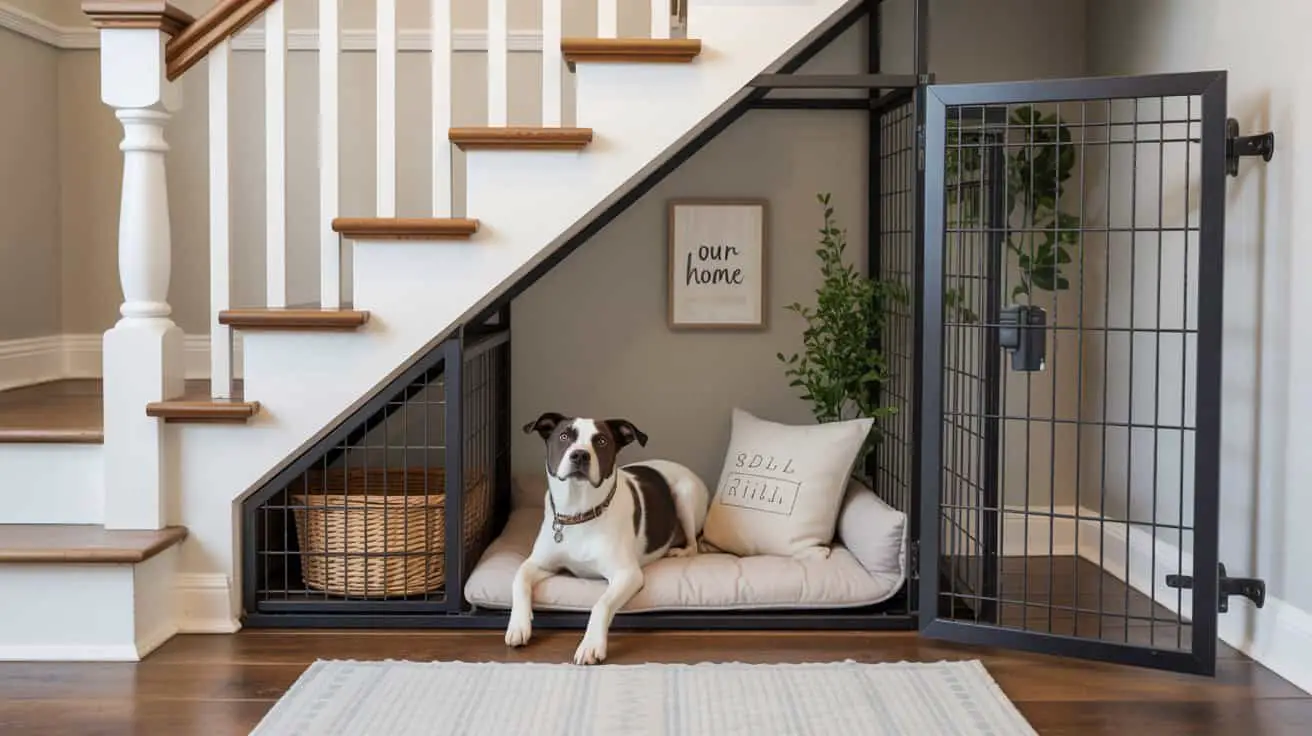
Designing a home that works for both people and pets can feel like a juggling act, especially when space is limited. That’s why the built-in dog crate trend has become so popular — it’s practical, aesthetic, and honestly feels like a small luxury for your pup. When you tuck a crate under the stairs, it turns an awkward corner into something intentional and cosy instead of wasted space. And when it’s styled well, it can look like part of your home’s architecture rather than a separate pet accessory.
In the example above, the dog’s space blends seamlessly into a modern home design. The black metal gate adds a decorative touch without feeling heavy, and the white staircase helps keep everything bright and open. Lighting is a surprisingly important part of making a built-in crate feel welcoming — the recessed ceiling lights create a soft glow that makes the area look more like a mini room than a crate.
Add Comfort With Soft Bedding and Subtle Decor

A built-in crate works best when the inside feels like a small living space for your dog rather than a storage box. A cushioned bed, a simple throw pillow, and soft neutrals keep the space calm and inviting. Using light-colored bedding also balances the darker tones of hardwood flooring and the metal gate. If your pet likes a cave-like feel, this setup still works — it gives them coziness, but without the clutter.
A tiny plant nearby and soft wall art, like the “Our Home” lettering, can make the whole area feel more connected to the main room. It’s a small detail that helps the crate feel intentional and styled rather than purely functional.
Choose Materials That Match Your Home’s Aesthetic

What makes this built-in crate so successful is how well the materials blend with the staircase and overall home design. White balusters, a warm beige wall, medium-brown hardwood flooring — nothing fights for attention. If you’re planning something similar, choose a gate finish, bedding color, and trim style that match your home’s palette.
This simple cohesiveness is what transforms the under-stair area into a design feature instead of an afterthought.

